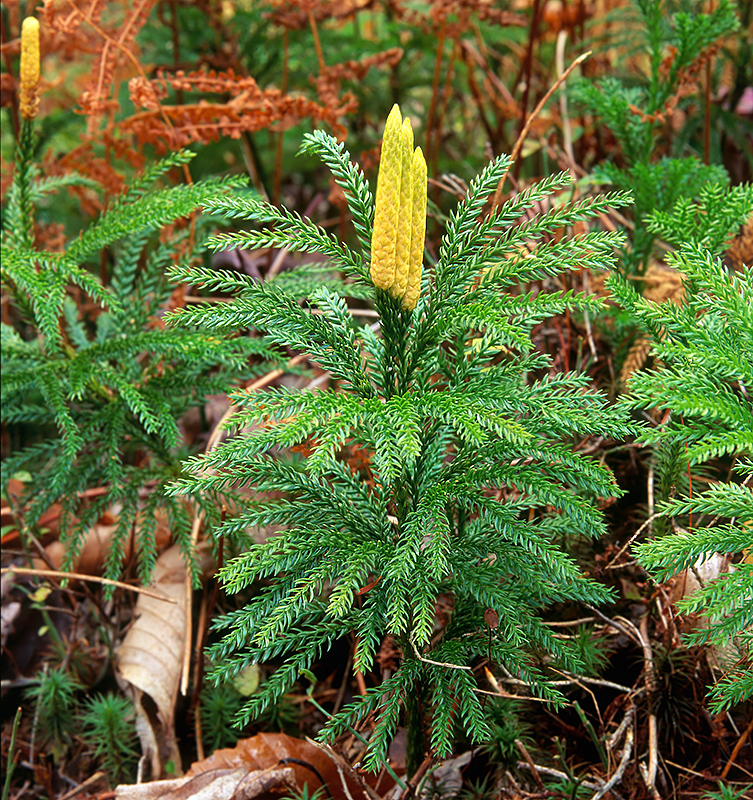Club moss is any of a widespread family of plants that somewhat resemble mosses. Club mosses, however, are more closely related to plants called quillworts than they are to true mosses. They grow around the world in a variety of habitats. The plants generally measure up to about 1 foot (30 centimeters) tall.

Club mosses have horizontal or erect stems covered with many small leaves. Each leaf has a single vein running through its entire length. Roots anchor the plants to the ground.
All club mosses reproduce by individual cells called spores. The spores form in sacs known as sporangia. In some club mosses, groups of sporangia occur as dense cones. Club moss spores develop into small leafless plant forms called gametophytes. These, in turn, develop into mature leafy green plants.
Club mosses probably first appeared during the Devonian Period, which lasted from about 420 million to 360 million years ago. Some prehistoric types flourished as tree-sized plants. They may have dominated many ancient landscapes.
